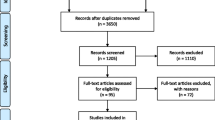Summary
Megacolon may be classified as primary or aganglionic, secondary or acquired, and functional or psychogenic. In addition, there are other mechanisms, currently poorly understood, that cause megacolon.
Diagnostic studies of the patient with megacolon should include a detailed history, physical examination, rectal and sigmoidoscopic examinations, a rectal biopsy, and (for functional megacolon) psychiatric evaluation. Age of onset, encopresis, and dilatation and elongation of the colon with a narrow rectal or rectosigmoid segment are import details to consider in the differential diagnosis. Biopsy of the rectum will prove the presence or absence of ganglion cells. Careful attention should be given to patients with constipation, lest some of them be unnecessarily relegated to lifetimes of avoidable embarrassment and suffering.
We have described the cases of four patients with megacolon who had reached their teens or even young adulthood before being treated. The Swenson pull-through procedure produced excellent results in each case.
Similar content being viewed by others
References
Bentley J. F. R., H. H. Nixon, T. Ehrenpreis, and B. Spencer. Seminar on pseudo-Hirschsprung's disease and related disorders. Arch. Dis. Child.41: 143, 1966.
Bodian, M., F. D. Stephens, and B. C. H. Ward: Hirschsprung's disease and idiopathic megacolon. Lancet.1: 6, 1949.
Ehrenpreis, T.: Megacolon in the newborn: A clinical and roentgenological study with special regard to the pathogenesis. Acta Chir. Scand.Suppl.112: 1, 1946.
Ehrenpreis, T.: Pseudo-Hirschsprung's disease. Arch. Dis. Child.40: 177, 1965.
Hertzler, J. H.: Personal communication to the authors.
Hiatt, R. B.: The surgical treatment of congenital megacolon. Ann. Surg.133: 321, 1951.
Leiter, E., and H. Brendler: Loss of ejaculation following bilateral retroperitoneal lymphadenectomy. J. Urol.98: 375, 1967.
Ravitch, M. M.: Pseudo Hirschsprung's disease. Ann. Surg.147: 781, 1958.
Swenson, O.: Follow up on 200 patients treated for Hirschsprung's disease during a ten-year period. Ann. Surg.146: 706, 1957.
Swenson, O., and A. H. Bill, Jr.: Resection of rectum and rectosigmoid with preservation of the sphincter for benign spastic lesions producing megacolon. Surgery.24: 212, 1948.
Swenson, O., E. B. D. Neuhauser, and L. K. Pickett: New concepts of the etiology, diagnosis and treatment of congenital megacolon (Hirschsprung's disease). Pediatrics.4: 201, 1949.
Whitehouse, F. R., and J. W. Kernohan: Myenteric plexus in congenital megacolon: Study of eleven cases. Arch. Intern. Med. (Chicago).82: 75, 1948.
Author information
Authors and Affiliations
Additional information
Read at the Meeting of the American Proctologic Society, Las Vegas, Nevada, May 10 to 13, 1971.
About this article
Cite this article
Ponka, J.L., Grodsinsky, C. & Brush, B.E. Megacolon in teen-aged and adult patients. Dis Colon Rectum 15, 14–22 (1972). https://doi.org/10.1007/BF02587663
Issue Date:
DOI: https://doi.org/10.1007/BF02587663




